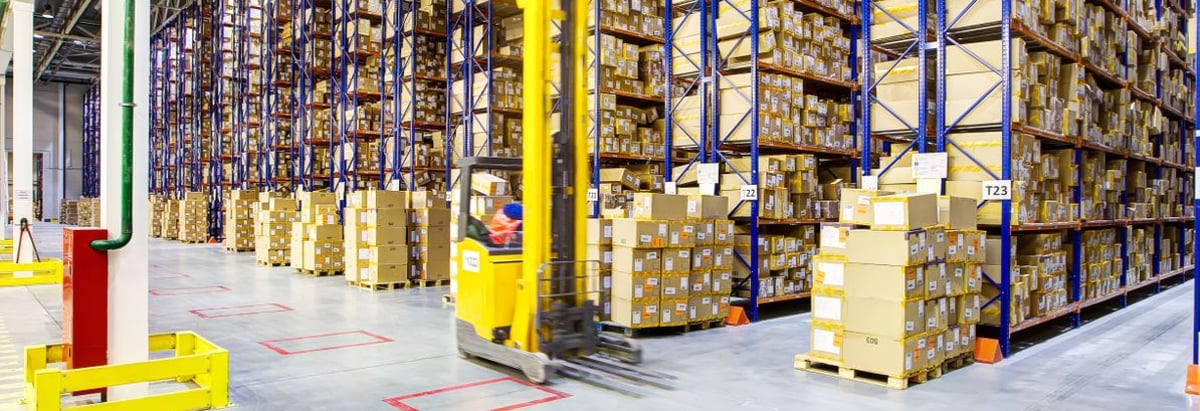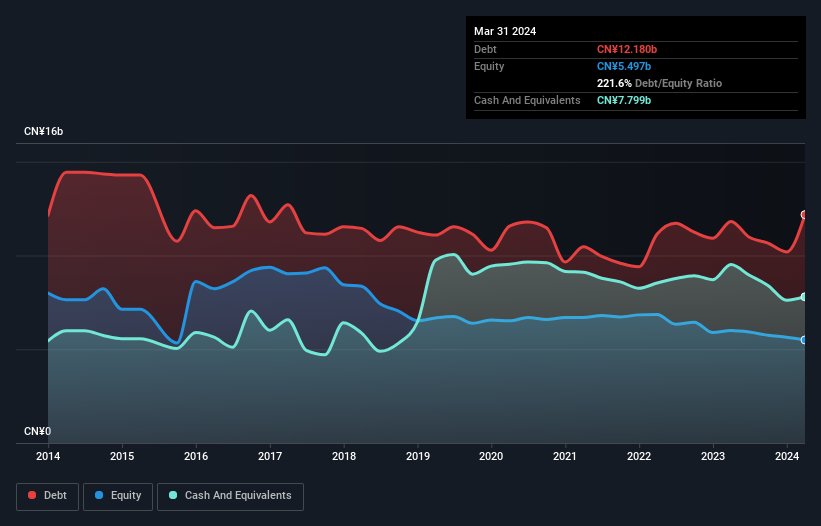- China
- /
- Retail Distributors
- /
- SHSE:600981
Is Jiangsu High Hope International Group (SHSE:600981) Using Too Much Debt?

Legendary fund manager Li Lu (who Charlie Munger backed) once said, 'The biggest investment risk is not the volatility of prices, but whether you will suffer a permanent loss of capital.' So it might be obvious that you need to consider debt, when you think about how risky any given stock is, because too much debt can sink a company. As with many other companies Jiangsu High Hope International Group Corporation (SHSE:600981) makes use of debt. But the real question is whether this debt is making the company risky.
When Is Debt Dangerous?
Generally speaking, debt only becomes a real problem when a company can't easily pay it off, either by raising capital or with its own cash flow. In the worst case scenario, a company can go bankrupt if it cannot pay its creditors. However, a more frequent (but still costly) occurrence is where a company must issue shares at bargain-basement prices, permanently diluting shareholders, just to shore up its balance sheet. Having said that, the most common situation is where a company manages its debt reasonably well - and to its own advantage. The first thing to do when considering how much debt a business uses is to look at its cash and debt together.
See our latest analysis for Jiangsu High Hope International Group
What Is Jiangsu High Hope International Group's Debt?
As you can see below, Jiangsu High Hope International Group had CN¥12.2b of debt, at March 2024, which is about the same as the year before. You can click the chart for greater detail. However, it also had CN¥7.80b in cash, and so its net debt is CN¥4.38b.

How Healthy Is Jiangsu High Hope International Group's Balance Sheet?
Zooming in on the latest balance sheet data, we can see that Jiangsu High Hope International Group had liabilities of CN¥15.8b due within 12 months and liabilities of CN¥5.10b due beyond that. Offsetting these obligations, it had cash of CN¥7.80b as well as receivables valued at CN¥3.32b due within 12 months. So its liabilities outweigh the sum of its cash and (near-term) receivables by CN¥9.76b.
This deficit casts a shadow over the CN¥4.80b company, like a colossus towering over mere mortals. So we'd watch its balance sheet closely, without a doubt. After all, Jiangsu High Hope International Group would likely require a major re-capitalisation if it had to pay its creditors today.
In order to size up a company's debt relative to its earnings, we calculate its net debt divided by its earnings before interest, tax, depreciation, and amortization (EBITDA) and its earnings before interest and tax (EBIT) divided by its interest expense (its interest cover). The advantage of this approach is that we take into account both the absolute quantum of debt (with net debt to EBITDA) and the actual interest expenses associated with that debt (with its interest cover ratio).
Jiangsu High Hope International Group shareholders face the double whammy of a high net debt to EBITDA ratio (8.1), and fairly weak interest coverage, since EBIT is just 1.1 times the interest expense. This means we'd consider it to have a heavy debt load. One redeeming factor for Jiangsu High Hope International Group is that it turned last year's EBIT loss into a gain of CN¥386m, over the last twelve months. When analysing debt levels, the balance sheet is the obvious place to start. But you can't view debt in total isolation; since Jiangsu High Hope International Group will need earnings to service that debt. So when considering debt, it's definitely worth looking at the earnings trend. Click here for an interactive snapshot.
Finally, while the tax-man may adore accounting profits, lenders only accept cold hard cash. So it is important to check how much of its earnings before interest and tax (EBIT) converts to actual free cash flow. During the last year, Jiangsu High Hope International Group produced sturdy free cash flow equating to 71% of its EBIT, about what we'd expect. This free cash flow puts the company in a good position to pay down debt, when appropriate.
Our View
To be frank both Jiangsu High Hope International Group's interest cover and its track record of staying on top of its total liabilities make us rather uncomfortable with its debt levels. But on the bright side, its conversion of EBIT to free cash flow is a good sign, and makes us more optimistic. We're quite clear that we consider Jiangsu High Hope International Group to be really rather risky, as a result of its balance sheet health. For this reason we're pretty cautious about the stock, and we think shareholders should keep a close eye on its liquidity. There's no doubt that we learn most about debt from the balance sheet. But ultimately, every company can contain risks that exist outside of the balance sheet. We've identified 2 warning signs with Jiangsu High Hope International Group , and understanding them should be part of your investment process.
At the end of the day, it's often better to focus on companies that are free from net debt. You can access our special list of such companies (all with a track record of profit growth). It's free.
New: Manage All Your Stock Portfolios in One Place
We've created the ultimate portfolio companion for stock investors, and it's free.
• Connect an unlimited number of Portfolios and see your total in one currency
• Be alerted to new Warning Signs or Risks via email or mobile
• Track the Fair Value of your stocks
Have feedback on this article? Concerned about the content? Get in touch with us directly. Alternatively, email editorial-team (at) simplywallst.com.
This article by Simply Wall St is general in nature. We provide commentary based on historical data and analyst forecasts only using an unbiased methodology and our articles are not intended to be financial advice. It does not constitute a recommendation to buy or sell any stock, and does not take account of your objectives, or your financial situation. We aim to bring you long-term focused analysis driven by fundamental data. Note that our analysis may not factor in the latest price-sensitive company announcements or qualitative material. Simply Wall St has no position in any stocks mentioned.
About SHSE:600981
Jiangsu High Hope International Group
Engages in trade, real estate, investment, logistics, manufacturing, services, etc.
Low and slightly overvalued.


